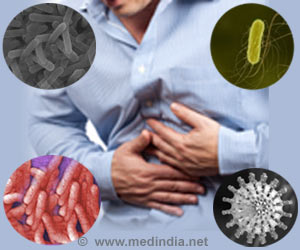New study identifies ways to improve pathogen control in the apple supply chain to avoid foodborne disease outbreaks and recalls of apples and apple products.

‘Biofilms are a collection of microorganisms that attach to a surface and then secrete a slimy material that slows down the penetration of cleaners and sanitizers. ’





"This work is part of Penn State's efforts to help producers comply with standards set forth in the federal Food Safety Modernization Act, often referred to as FSMA," said researcher Jasna Kovac, assistant professor of food science, College of Agricultural Sciences. "The Department of Food Science at Penn State, through research and extension activities, has an ongoing collaboration with the apple industry, led by Luke LaBorde, professor of food science." In the study, researchers sought to understand the composition of microbiota in apple-packing environments and its association with the occurrence of the foodborne pathogen Listeria monocytogenes. Their testing revealed that a packing plant with a significantly higher Listeria monocytogenes occurrence was uniquely dominated by the bacterial family Pseudomonadaceae and the fungal family Dipodascaceae.
"As we investigated the properties of these microorganisms, we learned that they are known to be very good biofilm formers," said lead researcher Xiaoqing Tan, a recently graduated master's degree student in food science and a member of the Penn State Microbiome Center, housed in the Huck Institutes of the Life Sciences. "Based on our findings, we hypothesize that these harmless microorganisms are supporting the persistence of Listeria monocytogenes because they protect the harmful bacteria by enclosing them in biofilms. We are testing this hypothesis in a follow-up study."
"If a pathogenic bacterium is enclosed in a biofilm formed by microbiota, it is more likely that cleaning and sanitizing procedures will be less effective," she said. "This is a novel perspective, and it may well explain how Listeria monocytogenes has persisted in food-processing plants despite repeated efforts to kill and remove it."
The findings of the research, published today (Aug. 21) in Microbiome, provide insight into the Listeria contamination problem and may lead to researchers and the apple industry getting closer to solving it, Kovac believes. Equipment in fruit-processing plants -- such as brush conveyors -- have a poor sanitary design that makes them difficult to clean and sanitize, she pointed out. She and LaBorde plan to work with the apple industry to devise more effective cleaning and sanitizing strategies.
Advertisement
The challenge presented by microbiota possibly sheltering Listeria monocytogenes is not limited to fruit-processing facilities or produce, Penn State researchers suspect. They will soon begin analyzing microbial communities in dairy-processing facilities to determine the microbial composition and ecology of these environments.
Advertisement















